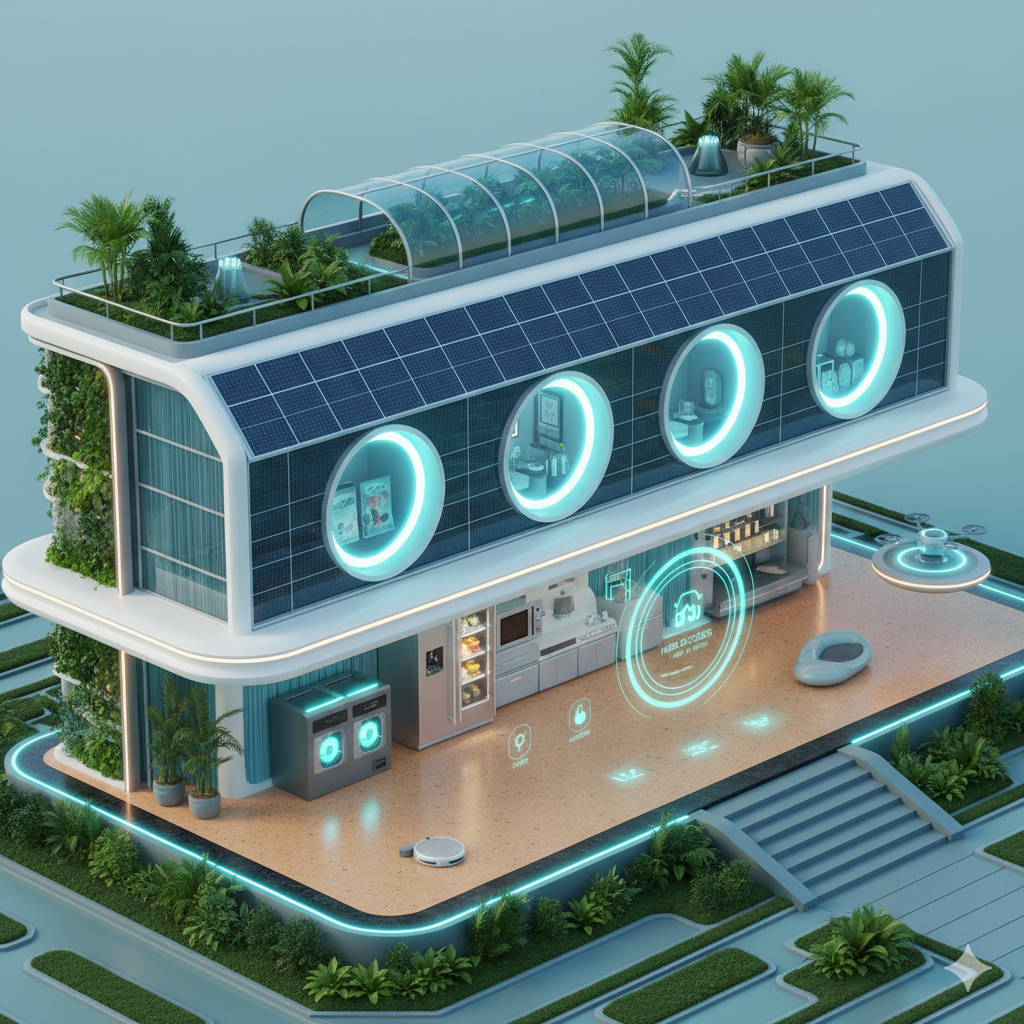Future of Smart Homes 2025: Living Smarter, Greener, and Safer

Introduction
Future of Smart Homes 2025 is no longer science fiction — it’s the new standard for modern living. With AI-powered assistants, connected appliances, and smarter energy systems, homes are becoming more efficient, secure, and comfortable. According to Statista, more than 450 million households may use smart devices by 2025, highlighting rapid adoption worldwide.
Smart homes in 2025 blend convenience with sustainability. From automated climate control to predictive maintenance, these systems reduce energy waste while improving everyday comfort. Below we explore the key technologies that make this transformation possible.
1. AI-Powered Home Automation
Artificial intelligence is the brain behind the smart home. In 2025, AI systems learn routines, predict needs, and manage multiple subsystems seamlessly. Voice assistants (Alexa, Google Assistant, Siri) and on-device AI now handle personalized routines — like preheating the oven, adjusting lighting for mood, or preparing the morning coffee at a set time.
Smart scheduling and predictive automation mean the Future of Smart Homes 2025 will feel more like living with a helpful, unobtrusive assistant than operating a set of devices.
2. Energy Efficiency and Sustainability
Energy-saving features are central to the smart home revolution. Integrated solar panels, smart thermostats, and home batteries (e.g., Powerwall-style systems) work together to lower bills and carbon footprints. Dynamic energy management systems shift heavy loads to off-peak hours and use local weather forecasts to optimize heating and cooling.
These efficiency gains make the Future of Smart Homes 2025 greener — and increasingly affordable — for many homeowners.
3. Next-Gen Security Systems
Security tech is smarter, too. AI-enabled cameras detect unusual activity and send real-time alerts; smart locks use biometric and two-factor authentication; and facial recognition doorbells verify visitors. These advancements enable homeowners to monitor their property more effectively and respond to incidents faster.
Security integration across devices creates a unified defense system that adapts over time — a hallmark of the Future of Smart Homes 2025.
4. Interconnected Living (IoT and Matter Protocol)
The IoT revolution continues to break down compatibility barriers. With the Matter protocol, devices from different brands finally interoperate smoothly. Your fridge can reorder groceries, your washer can run when electricity is cheapest, and your HVAC can pre-cool rooms before you arrive.
This deep interoperability is key to a truly connected home experience in 2025.
5. Voice, Gesture & Emotion Control
Beyond touchscreens, natural interaction is the next frontier. Voice control is becoming more conversational and context-aware, while gesture sensors and emotion recognition help systems respond appropriately. For example, lighting that adjusts to your mood or a TV that suggests calming content when stress is detected.
6. Smart Furniture & Adaptive Spaces
Smart furniture — beds that track sleep, mirrors that display health data, tables that adjust height automatically — make living spaces adaptive. Modular rooms reconfigure for work, exercise, or rest, powered by IoT sensors and automated controls.
Top Benefits for Homeowners
- Convenience: Automations save time on daily tasks.
- Cost Savings: Energy optimization reduces monthly bills.
- Security: Real-time monitoring and AI alerts improve safety.
- Comfort: Personalized environments adapt to your needs.
Challenges to Address
Privacy, data security, and device fragmentation remain concerns. Manufacturers and regulators must prioritize secure defaults, data transparency, and clear interoperability standards to ensure the Future of Smart Homes 2025 benefits everyone.
Conclusion
The Future of Smart Homes 2025 promises a life that is smarter, greener, and more intuitive. As AI, IoT, and sustainable energy converge, our homes will become responsive ecosystems that enhance well-being while reducing environmental impact. If you’re planning upgrades, focus on open standards (like Matter), energy-efficient devices, and secure platforms to get the most value from smart-home investments.
Also read: Future of Electric Cars 2025 — learn how smart mobility and connected homes will shape a sustainable future.
For further reading on adoption stats, visit Statista.